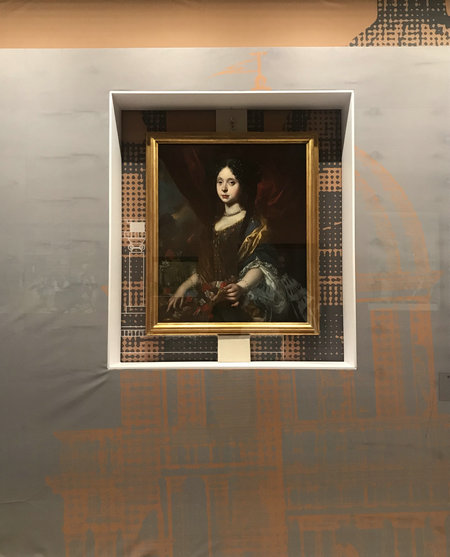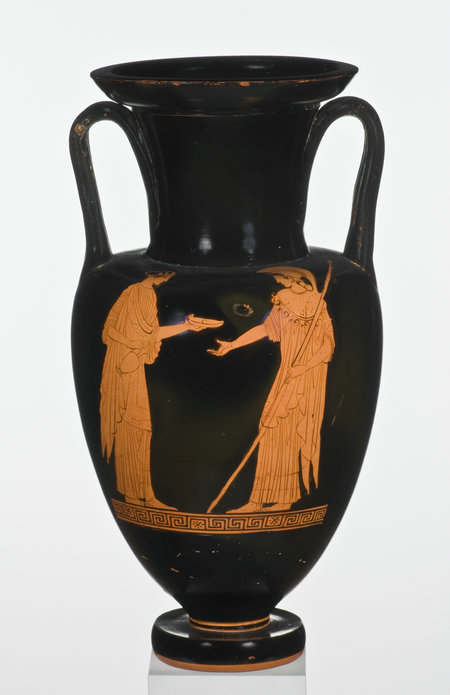
Objects shown at the History of Museums exhibition include a Ming Dynasty (1368-1644) gold sachet inlaid with precious stones. [Photo provided to China Daily]
The look and work of museums have evolved through centuries. The word "museum" traces its origin to the Latin mouseion that refers to a sacred place where ancient Greeks worshipped nine muses who patronized the arts. It also denotes an institution for philosophical research in Alexandria, Egypt, built around the third century BC.
An ongoing exhibition in China, History of Museums, is seeking to tell such stories and go beyond by identifying the core values of a museum, especially providing people with a place to reflect, study and arouse their creativity. The display is being held at the Nanjing Municipal Museum through Aug 26.
Apart from items in the Nanjing museum's own collections, objects and documents displayed are from several other cultural institutions, such as the Uffizi Galleries of Italy and the State Collection of Antiques and Archaeology Museum in Munich, Germany.
The display navigates the changing roles of a museum-from a private venue with rich holdings of art but only accessible to the elite to a public space whose modern appearance glorifies a cityscape and collections boost national pride.
The exhibition opened in late May on the sidelines of the International Forum of Museum Directors in Nanjing, where directors of Chinese museums shared with their global peers ideas on how museums in the country are trying to cater to people's diverse tastes as China urbanizes rapidly.

Objects shown at the History of Museums exhibition include a bust of Gaius Caesar dated between first and fourth centuries. [Photo provided to China Daily]
The exhibition specially examines the introduction of modern museums in China.
In the past, the country had cultivated a culture of royal and private collections.
Chinese scholars and industrialists who traveled to Europe in the late 19th century understood the importance of a museum in public education and social progress, according to the exhibition, and therefore, constructing museums became an initiative for social reform in Chinese society.
One such pioneer was Zhang Jian (1853-1926), the entrepreneur who founded China's first public museum in Nantong, Jiangsu province, in 1905. Seals, coins and other antiques from the museum's storage are on show at the ongoing exhibition. The establishment of Nantong Museum bolstered museum building in Jiangsu, a financial and industrial center in Chinese history.
In 1928, China's first private art museum was founded in Jiangsu's Suzhou. In 1933, Nanjing Museum was constructed as the first government-sponsored comprehensive museum in the provincial capital, and three years later, the country's first national art museum, Jiangsu Art Museum, was opened to the public.

Objects shown at the History of Museums exhibition include Portrait of Anna Maria Luisa de' Medici.[Photo provided to China Daily]
Holographic images of the later two museums are simulated at the current exhibition. These laid the foundation for the development of Chinese museums in recent decades.
Today, museums across the country have reached out to the center of cultural life in communities, acting as a bond among people.
Government data show that Chinese museums numbered more than 4,100 in 2016 and were visited by more than 850 million people, with Jiangsu topping other provinces in attendance for successive years from 2010 to 2016.
"The museum is a place where one can find at least one object he or she likes, no matter how old the person is," says Gong Liang, the director of Nanjing Museum. "It is also a place where people can feel attached to the stories behind the exhibits-how these objects on show are related to each other, to the audience and to a specific region's culture."
Gong says about half of the exhibitions ever held at his museum focus on Nanjing, a picturesque city that served as the capital for several dynasties in imperial China, and some 20 percent are about Jiangsu.

Objects shown at the History of Museums exhibition include a clay vase dated around 450 BC. [Photo provided to China Daily]
As for exhibitions on foreign cultures, the museum usually incorporates a Chinese perspective to make it easier for visitors to understand, Gong adds.
Last year, the museum in cooperation with the Royal Ontario Museum of Canada held an exhibition juxtaposing objects dating to ancient Egypt and China's Han Dynasty (206 BC-AD 220) that provided comparisons between the two civilizations on their attitudes toward life, power and immortality.
An Laishun, deputy chairman of the Beijing-based nonprofit Chinese Museums Association, says a museum should serve multiple purposes.
"It not only conserves a treasure trove of cultural memories and makes them understandable to people in contemporary times, but it also should reflect current social issues, such as urbanization and sustainable development, and become a channel appealing for actions for progress."
Contact the writer at linqi@chinadaily.com.cn
If you go
9 am-6 pm, last entry at 5 pm, through Aug 26.
4 Chaotian Gong (Palace), Nanjing, Jiangsu province.
025-8446-6460/8420-0177.


